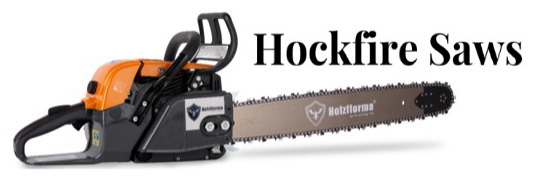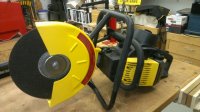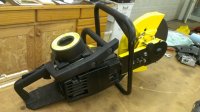- Local time
- 5:04 PM
- User ID
- 714
- Joined
- Jan 28, 2016
- Messages
- 4,002
- Reaction score
- 28,451
- Location
- Dike, Iowa
The 600 Series saws are much maligned, and not all of it is unwarranted. They are heavy, performance is pretty low for a 60 (or 57 cc) saw, different models were 3.4 and 3.7 In³. McCulloch may have suggested up to 28" bar, I bought a well used 650 that had been fit with a 48" bar. This was a tree service saw and they agreed it was not fast with the big bar, but it was a better alternative that dragging out the McCulloch 840 they had previously used...
There were many different models and not all were created equal. The 650 with the compression release on the side seem to be the most desirable, at least the people that ran those won't ever be happy with a 605 or 610. There was also a 655 (carried the same "The Professional" label as several of the 10 Series saws like the 10-10S and several PM55 models). The PM5700 was a later version (57 cc) like the Silver Eagle 3420 (3.4 In³ or 57 cc). There are hard copy IPL's for a mythical PM645 I have never seen or heard of one actually existing.
Montgomery Wards sold a version as well, more orange than yellow with a "TM" & model number designation.
Heavy, slow, loud, the oilers would seep into the crankcase and smoke at start up...and as Al noted virtually indestructible. I was given a 610 that was locked up, I bumped the flywheel with a hammer and a block of wood to knock it loose and with a little more coaxing it was again a runner.
We have a Timber Bear (one of the late 60 cc versions) with new rings that does not perform badly with a 24" bar but certainly can't keep up with a healthy PM55. There was an Eager Beaver model as well...too many names to properly identify one saw. You do really need a score card, or at least a complete set of IPL's with model numbers to be able to identify the different saws and know just what goes in to them. The piston and cylinders had variations, and there were thin and thick ring versions but virtually all of the other parts interchange . Bars and clutches interchange with any of the 10 Series saws. Am I rambling???
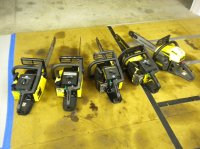
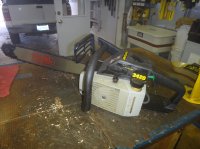
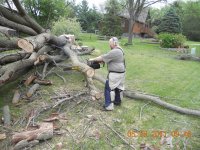
Mark
There were many different models and not all were created equal. The 650 with the compression release on the side seem to be the most desirable, at least the people that ran those won't ever be happy with a 605 or 610. There was also a 655 (carried the same "The Professional" label as several of the 10 Series saws like the 10-10S and several PM55 models). The PM5700 was a later version (57 cc) like the Silver Eagle 3420 (3.4 In³ or 57 cc). There are hard copy IPL's for a mythical PM645 I have never seen or heard of one actually existing.
Montgomery Wards sold a version as well, more orange than yellow with a "TM" & model number designation.
Heavy, slow, loud, the oilers would seep into the crankcase and smoke at start up...and as Al noted virtually indestructible. I was given a 610 that was locked up, I bumped the flywheel with a hammer and a block of wood to knock it loose and with a little more coaxing it was again a runner.
We have a Timber Bear (one of the late 60 cc versions) with new rings that does not perform badly with a 24" bar but certainly can't keep up with a healthy PM55. There was an Eager Beaver model as well...too many names to properly identify one saw. You do really need a score card, or at least a complete set of IPL's with model numbers to be able to identify the different saws and know just what goes in to them. The piston and cylinders had variations, and there were thin and thick ring versions but virtually all of the other parts interchange . Bars and clutches interchange with any of the 10 Series saws. Am I rambling???



Mark






